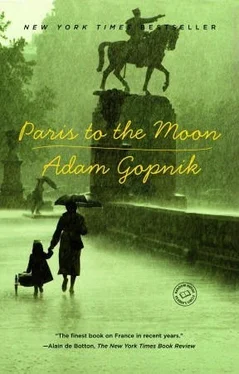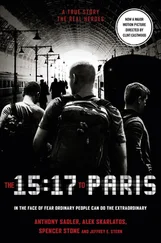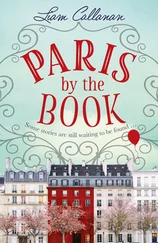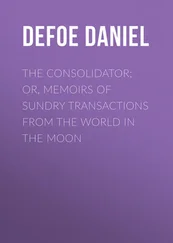The odd thing in making a big move is the knowledge that your life will be composed of hundreds of small things that you will arrive at only by trial and error, and that for all the strikes and seminars you attend, the real flavor of life will be determined, shaped, by these things. The Semiosphere comes at you in little bursts. Where will your hair be cut? What kind of coffee will you buy, and where? We have been searching for the right mocha, everywhere we go: at La Vieille France, a pastry store on the rue de Buci; at Hediard, on the place de la Madeleine; at Whittard, an English coffee importer that has a counter in the Conran on the rue du Bac. Our old Dean & DeLuca blend is gone now, and we must find a new one. The Shaky Lady will preside over some kind of coffee, but even she cannot know quite which one, not just yet.
We have been trying to furnish our place—we had minimal furniture in the New York loft, really, chairs and rugs and rattraps—and on Sundays we go up to the Marche aux Puces, the flea market, which remains a wonder, though the only fleas in it all have Platinum American Express cards. (It isn’t cheap.) The Metro ride up to the porte de Clignancourt is a joy, though, just for the names of the stations in northern Paris: Chateau Rouge, Chateau d’Eau—what -was the Red Castle? what was the Water Tower?—Poissonniers, Gare du Nord, with its lovely, thirties, Gabinish overtones. We come up, back home, at Odeon, under the statue of Danton, and a single limb of a chestnut tree hangs over the Metro stairs. It’s dark already at five o’clock, the limb silhouetted against the moonlit sky while the crowd presses against you on the stairs. What an old place France is, the attic bursting with old caned chairs and zinc bars and peeling dressers and varnished settees. The feeling is totally different from an antiques fair in America; this is the attic of a civilization.
Today we stop at Le Biron for lunch; the restaurants up at the flea market—Le Biron, Le Voltaire—are among the few real bistros left, in the sense of simple places with some culinary pretension that maintain an air of joie de vivre. The poor madame is terribly overworked, and we feel for her, but lunch, simple chicken, takes an hour and a half. The tarte tatin is very good, though. After lunch, on this freezing cold day, faint light raking through the stalls, Luke and I stop at the little bar with a Django-style swing band: two gypsy guitarists with ancient electrics with f-holes, joined by a good-looking blonde with an alto sax. There’s a couple smoking endless Gauloises next to us. I ordered, with a thrilling automatic feeling, a café-calva and a grenadine for Luke. They played the old American songs—“All of Me,” “There Will Never Be Another You”—some Jobim too, really swinging it. Martha was off shopping at Vernaison for a plain old table. A perfect half hour.
Martha insisted on taking a cab home, declaring it too cold to get on the Metro. The cabbie, observing Luke, began a disquisition on children. Only children—we explained in French that he won’t be, or we hoped he wouldn’t be—are, he explained, the cause of the high modern divorce rate: The boy arrives, and the man feels jealous; there is another man in his wife’s life (well, another being), and this leads to jealousy, a lover; and the whole cycle over again. (Why a second child would cure this…) This is why women must have three children and stay home. “The school instructs,” he explained, “but the family educates.” I couldn’t decide whether to give him a large or small tip.
It is odd to think that for so long people came to Paris mostly for the sex. “City of the naughty spree,” Auden wrote disdainfully in the twenties, “La Vie Parisienne, Les Folies-Berg ere, Mademoiselle Fifi, bedroom mirrors and bidets, lingerie and adultery.” These days the city’s reputation for naughtiness has pretty much diminished away to nothing. Now the dirty movies get made in Amsterdam; the dirty drawings get sent in from Tokyo; and Oriental and even German towns, of all places, are the places you go for sexual experiment. (Even the bidets are gone from Paris, mostly converted into bizarre plug-in electric toilets, which roar as they chew up human waste, in a frenzy of sanitary appetite, and then send it out, chastened, down the ordinary water pipes.)
Things have become so run-down, or cleaned up, sexually here that France has even reached the point where it is running a bimbo deficit and has to import its sex objects. Just last week Sharon Stone was flown in to Paris to be made a Chevalier of Arts and Letters by the French minister of culture, M. Philippe Douste-Blazy. The award struck many Parisians as ridiculous, but it was, in its crude way, a logical part of a consistent cultural policy. Despite their reputation, the French are not really cultural chauvinists at all. They remain chauvinists about their judgment, a different thing; increasingly their judgment is their culture. They want to be free to continue to reinvent American culture in their own image, finding art forms where back home we saw only hackwork and actresses where we saw only bimbos. (The award to Sharon Stone was for “her services to world culture.”) They don’t mind if the Americans make the movies so long as they get to pass out the medals. Pinning a decoration on Sharon Stone is the perfect way of looking down your nose at U.S. cultural imperialism while simultaneously fondling its chest.
The one exception to the erotic milding of Paris are the lingerie ads, which still fill the boulevards and billboards. The ads—particularly the ones for Aubade—are sharply, unsettlingly erotic, to a male viewer, and differ from their American counterparts in not seeming particularly modern. Women are, as we would say, reduced to body parts; the Aubade ads isolate breasts or thighs or legs as relentlessly as a prep chef at KFC, each part dressed up in a somewhat rococo bit of underwear, lace and thong, in sculpted-lit black and white, very Hurrell, with a mocking “rule” underneath it—i.e., “Rule Twenty-four: Feign Indifference.”
There is something stimulating but old-fashioned about these posters (which, for a week or two at a time, are everywhere, on every bus stop, on every bus). They are coquettish, a word I had never associated with a feeling before. For all the complaints about a new puritanism, the truth is that feminism in America has, by restoring an edge of unpredictability and danger to the way women behave and the way men react to that behavior, added to the total of tension on which desire depends. The edgy, complicated, reverse-spin coding of New York life—this skintight dress is not a come-on but its opposite, a declaration of independence meant not for you but for me—is unknown here. Here, the intellectuals wear black, and the models wear Alaia.
The other evening, for instance, we went to a dinner party where the philosopher Bernard-Henri Levy appeared with his wife, the amazing-looking Arielle Dombasle (who wore a bathing suit in one of those philosophical-erotic-talky French films, from the time when philosophical-erotic-talky French films were the delight of the Upper West Side). She wore a skintight lame dress. We saw her a week or so later and she was wearing another clinging lame dress, as though out of obligation to her own image, her own invention. Desir in Paris is surreptitious but not ironic; everyone has affairs, but no one has reverse-spin coding. In New York the woman in the clinging dress is probably a professor at Hunter, while the girl in all black with no makeup reading the
French papers may be Sharon Stone. You could tell by the medal, I suppose.
Mostly, we shop at BHV, the department store on the rue de Rivoli, which has become our home, our Luxembourg Gardens. BHV—the Bazar de 1’Hotel de Ville, the City Hall Bazaar—is always called by its initials (bay-aish-vay), and it is an old store, one of the great nineteenth-century department stores on the Right Bank that are the children of the Galeries Lafayette. As I say, it is on the rue de Rivoli; in fact that famous Robert Doisneau photograph of the two lovers kissing is set on the rue de Rivoli just outside BHV. This is doubly ironic: first, because the narrow strip of the rue de Rivoli in front of BHV is about the last place in the world that you would want to share a passionate kiss—it would be a bit like kissing at the entrance to the BMT near Macy’s—and of course, it explains why they did it anyway. They are not sundered lovers but a young couple who have managed to buy an electric oven and emerged alive. Anyone who has spent time at BHV knows that they are kissing not from an onset of passion but from gratitude at having gotten out again.
Читать дальше












